SOME SPECIAL ANNOUNCEMENTS
Having reached a point in life where I recognize, like it or not, that I’ve got a lot more days behind me than I have ahead of me, it’s time to undertake some of what auctioneers sometimes describe as “downsizing.” I don’t like the word, because it carries with it the implicit suggestion that the owner of whatever estate might be involved have spent decades “upsizing.” I prefer, in my case, merely to think of it as turning the first page on a new chapter in my life.
Whatever the terminology, over the coming months I’ll be selling a wide array of items I’ve accumulated as a sportsman and in fields of collecting covering stamps, coins, turkey calls, books, and other passions. The first step in this process will involve a local auctioneer, Randy Ligon, offering a couple hundred items of mine in an on-line auction next month. The lots include signed copies of books I wrote or edited, a number of guns, Archibald Rutledge memorabilia of various sorts, optics, sporting collectibles, and more. I’ll get Tipper Pressley, my stellar webmaster, to send out an e-blast once everything is listed, supported by photographs, and bidding is open. Meanwhile, you can already view scores of items and register for the auction by visiting this page. I think that will get you there but if not, just e-mail me (jimcasada@comporium.net) and I’ll make sure you have the requisite information.
I’m also planning to sell a goodly portion of a turkey call collection I’ve formed over many decades of being an avid hunter, one of the country’s most active writers on the sport, and the author of multiple books on the subject. While I realize the vast majority of you aren’t turkey hunters, much less call collectors, anyone out there who might be interested can send me an e-mail and I’ll be sure you get the list when it’s ready. I’ll be selling the calls myself, mainly because it’s an area where I have more background and depth of knowledge that is likely to be found with an auction house.
Many of you are already aware of the fact that the genius behind getting this newsletter to you each month is my webmaster, Tipper Pressley, and I mentioned her above as I have done a number of times in the past. Indeed, I’m pretty certain that a goodly number of you receive her daily blog, “Blind Pig & the Acorn” and/or regularly follow her YouTube video presentations on “Celebrating Appalachia.” She’s an indefatigable missionary for all things Appalachian and has an uncanny knack with coming up with subject matter of great interest. I’ve pestered Tipper for years to do a book, and now that is going to become reality. The two of us have signed a contract with a commercial publisher to write a cookbook focusing on the region, foodways, and folkways that lie at the heart of our heritage. We don’t have a firm title yet, although there’s a good chance “celebrating Appalachia” will figure in it after some fashion. Both of us have, to use Tipper’s words, a “love affair” with Appalachia, and this is a way to celebrate our passion for food and the folks who have made it special over the generations. It’s also a grand opportunity to pay homage to the highland homeland where we were raised.
To that end, I’d love to have some input from you, my readers, on some of the food topics you would like to see covered. I feel comfortable in saying that Tipper will heartily concur. Obviously there are “must cover” foods in anything on Appalachian cookery—cornbread and biscuits, stack cake and cobblers, pork and chicken, vegetables and fruits, food from nature, and more. Nonetheless, we’d love to have your thoughts (not specific recipes—those will come from us—but just ideas of foodstuffs you feel are integral and important to any cookbook on the region. I look forward to your input. Your thoughts will provide us some guidance both on where particular emphasis should lie and topics we need to be sure we don’t miss. After all, it’s folks like you, kindred spirits who read our material, who form the intended audience for the book.
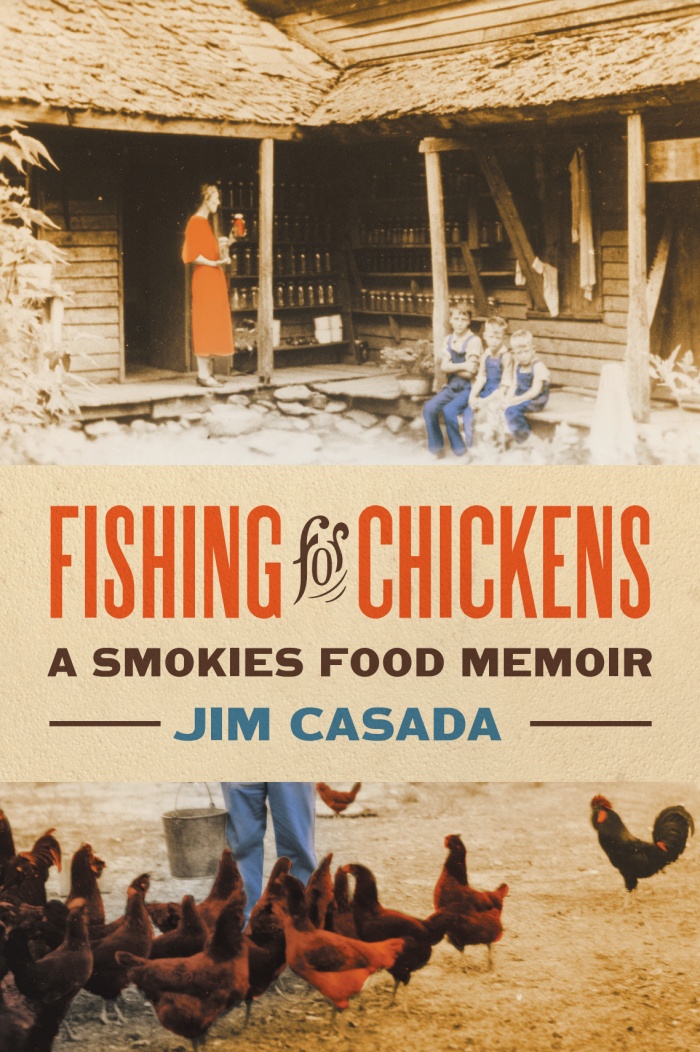
Finally, I finished up and signed off on the page proofs and indices (there are two, one a general index and the second a food and recipe index) for my forthcoming food memoir, Fishing for Chickens: A Smokies Food Memoir. The book, which runs to well over 300 pages and features dozens of illustrations and scores of recipes, endeavors to capture the foodways I knew as a boy in terms not only of what graced the family table but how we grew it, raised it, harvested it, preserved it, and cooked it. In other words, it is food as the staff of life as I knew it in my youth. Grandpa Joe and Grandma Minnie, along with my parents, loom large in the picture, and I should emphasize that while this book contains a lot of recipes, it is a story of how life was lived, not a cookbook. I view it as a companion volume to A Smoky Mountain Boyhood. I’m now taking advance orders and if you reserve a copy at this point, as an incentive to you and a way of me getting a head start, shipping will be free. Just let me know that you will want a copy (it is priced at $28.95). That’s enough news to test any reader’s attention span, so let’s turn to the questionable delights of February in yesteryear as seen through the eyes of Grandpa Joe (and my memory).
****************************************************************************
FEBRUARY: MOLLYGRUBS, MISERY, AND SOME MAGIC
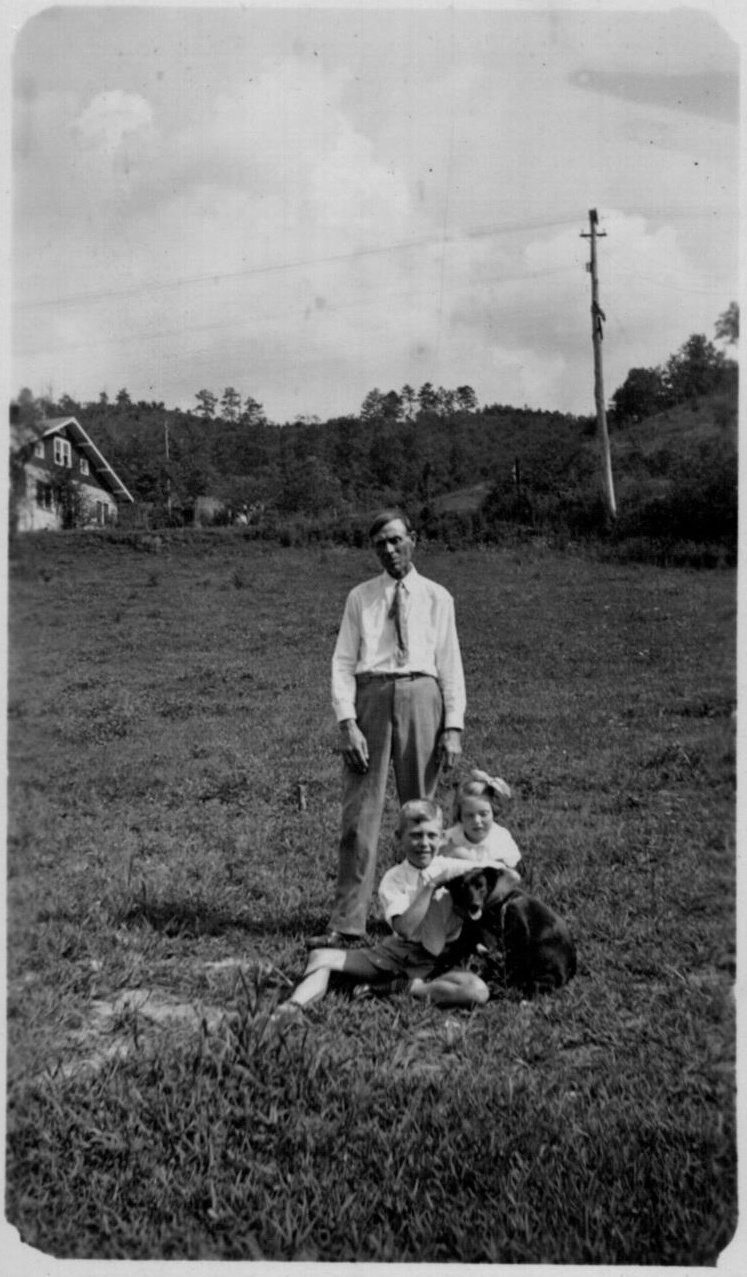
Grandpa Joe with two of my older cousins.
A couple of weeks ago I looked back at some early newsletters and was particularly struck by the contents for a variety of reasons. Particularly impactful was coverage dating back a dozen years to when I was in my late sixties as opposed to the octogenarian status I attained a couple of weeks back. More significantly though, I resurrected my beloved Grandpa Joe at his crusty, crotchety, cranky, and curmudgeonly best (and obviously whole bunch of appropriate adjectives starting with the letter “c” came to mind. Some members of the family would have added crazy, but for me he was just delightfully different. For me, and to stay with the alliterative descriptors for a moment, being around him was mystical, magical, mesmerizing, and deeply moving.
Never does the month of February roll around without me fondly recalling Grandpa Joe’s thoughts regarding this time of year.“February,” he would opine, “is the shortest month of the year for a very good reason. A body rightly can’t stand any more than twenty-eight days of misery.” Warming to his subject and punctuating his conversation with his hands and an occasional turning aside to expectorate (for those of you who don’t care for what a favorite high school English teacher of mine called “ten dollar words,” that means spit), Grandpa would light into February like a mountain cur grabbing a downed grey squirrel or a chicken pouncing on a June bug.
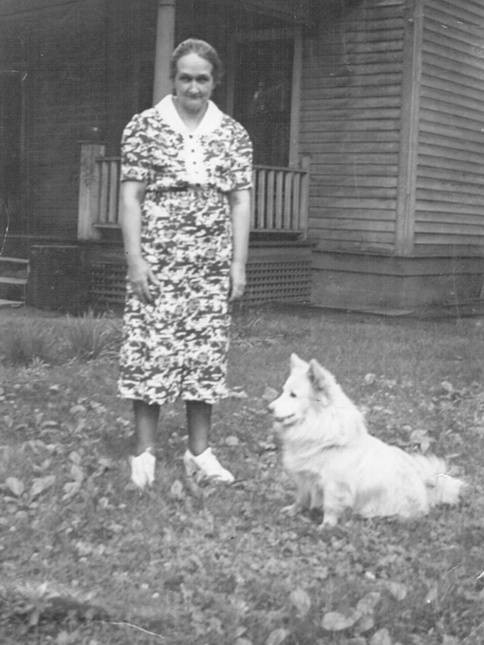
Minnie Price Casada, at the house next door
to where she and Grandpa Joe lived.
“I’m tired of the miseries,” he would say, “all the decent hunting’s over for the year, the fish won’t bite for another two months, your Grandma Minnie is peevish as a sore-tailed ‘coon hound, and I’ve got a hankering for a mess of poke sallet that won’t be met for another three months.” Having reached the point in life where Grandpa was when roundly condemning February and having an all too intimate acquaintance with some of the arthritis and general feeling of lassitude Grandpa styled “the miseries,” the accuracy of his words from those decades long ago is abundantly clear.
Yet Grandpa was too much an optimist to let something like cabin fever, a prolonged spell of bad weather, or a lack of hunting and fishing opportunities trouble him for long. I will admit though, that he did have a streak of paranoia along the lines of harboring appreciable distrust for any and all bureaucrats and politicians. He thought they had him and all other ordinary folks constantly in their crosshairs. Such thoughts seemed far-fetched to a carefree boy, but in today’s world, one where most politicians have lost every semblance of common sense, decency, and meaningful connection with everyday folks, I am increasingly inclined to accept Grandpa’s outlook. I’m pretty much of the opinion he had reason aplenty to be a bit distrustful of mankind in general and ample reason to put particular distrust in bureaucrats and politicians.
With that mini-diatribe out of the way, I’ll simply say that over time realization has gradually dawned that Grandpa was even wiser than I thought then, and as a boy I considered him a flowing fount of wisdom. Now we’ll turn to more pleasant topics in the form of some of the simple pleasures I enjoyed as a boy along with time-tested ways to escape blue funks.
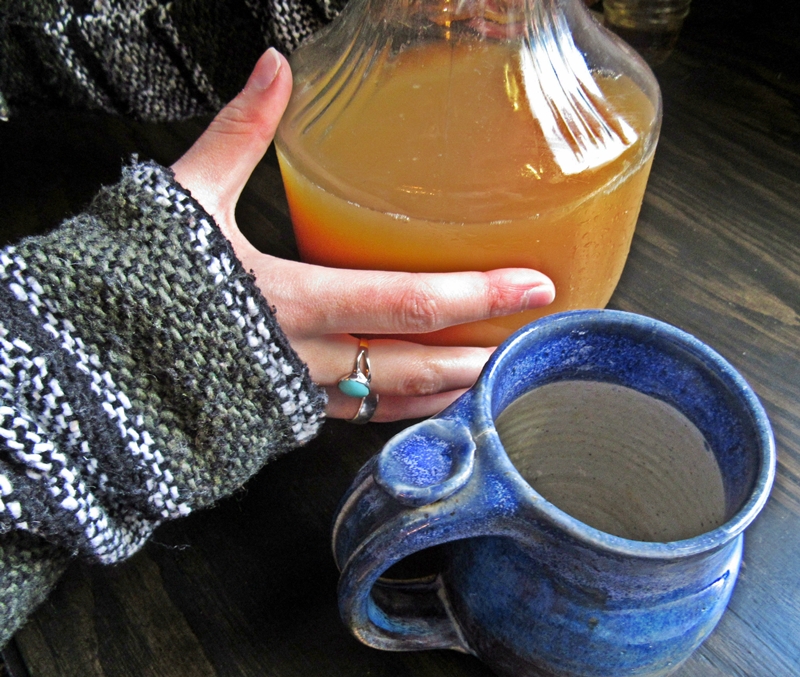
Once he got through complaining and perhaps had his hands wrapped around a steaming cup of what he called “Rooshian (i. e., Russian) tea, Grandpa Joe would turn to the brighter side of life’s daily coin. Among his favorite pastimes at any season was what Grandpa described as “dreamin’ and schemin’,” and February was perfect for indulging in such mental enterprises. One favorite of mine involved him reliving an episode from his early manhood in the latter third of the nineteenth century as he described shooting a “painter” (panther) that was airborne and at point-blank range. He lived in a time when cougars, which mountain folks called panthers or painters, still roamed the North Carolina high country. His tales of a cougar’s scream (caterwauling he called it) were sufficiently graphic to scare the bejeebers out of a decidedly impressionistic lad who listened to him with a rapt attention combining admiration, awe, and total belief.
Other topics often covered in Grandpa’s extended sessions of storytelling included a hilarious account of catching a whole bunch of cottontails which couldn’t maneuver in a deep, soft snow and turning them loose in the one-room shack of an eccentric old mountain man (at the old-timer’s insistence). Apparently the rabbits just about tore the place apart and left a legacy of fleas in the bargain. There were tales of encounters with wild turkeys while afield, something I had never seen at the time and would not observe for many years to come. I loved Grandpa’s recollections of squirrel hunting when the reigning king of high country forests, the American chestnut, had not yet fallen victim to a deadly blight. He told of killing a dozen squirrels while never leaving the log on which he was perched, and of chestnut trees so tall a shotgun loaded with #5 or #6 shot had no effect on squirrels feeding in their uppermost limbs.
Sooner or later though, the subject matter would turn from reminiscences of the good old days to thoughts about how we could create some new memories in the days of spring both of us wanted to arrive posthaste. Usually such “schemin’” would involve two key considerations—where to go fishing and piddling with equipment. The latter matter gave us a perfect excuse for some hands-on activity, and virtually every February the two of us would get involved with making cane poles, fashioning some sinkers from the pliable lead once used to cover roofing nails, or maybe making a fancy stringer, complete with a carved wooden carrying handle, to tote the bevies of fish we dreamed of catching.
Cane is a versatile plant with a myriad of uses, and there was a fine canebrake just up the river from where Grandpa lived. We would cut a bunch of canes to be used as frames for runner beans, October beans, and crowder peas (also called field peas and clay peas) to climb, with smaller switch canes being suitable for half-runners and the base of big bamboo stalks doing fine duty as tomato stakes. One or two especially long canes would be dedicated to “fishing for chickens,” a process I’ve described in the past which involved getting the raw material for Sunday dinner to grab a kernel of corn attached to a fishing hook (and it figures in the title of my forthcoming book). Long canes had another use; obtaining fish bait in late summer in the form of wasp and hornet larva. The lengthy poles could be used to knock down nests or to hold a smudge to stun the stinging insects before knocking their domiciles to the earth.
Primarily though, we were making fishing poles. Anywhere from a half dozen to a dozen canes would be selected, divested of all side foliage with Grandpa’s finely whetted Barlow knife, and sawed through the middle of a joint at the base. At that point the canes were ready to be straightened and cured. This was accomplished by tying a rock or other weight to the tip end then suspending the pole from a suitable tree limb. We contemplated using the rafters of my grandparents’ two-story home at one point, but Grandma Minnie promptly and unequivocally made it clear we weren’t going to decorate her home, never mind that the portion we had in mind was the side facing the garden invisible to passersby, with such “old man’s trash” and “young boy’s foolishness.”
After a few weeks and as fishing season drew near, we would take the now dry and straight canes down, outfit them with black nylon line tipped with a few feet of monofilament, add a sinker, and finish things up with a hook and possibly a bobber made from an old bottle cork. Grandpa was a firm believer in the adage “make do with what you’ve got,” and except for the hooks and line, everything was free.
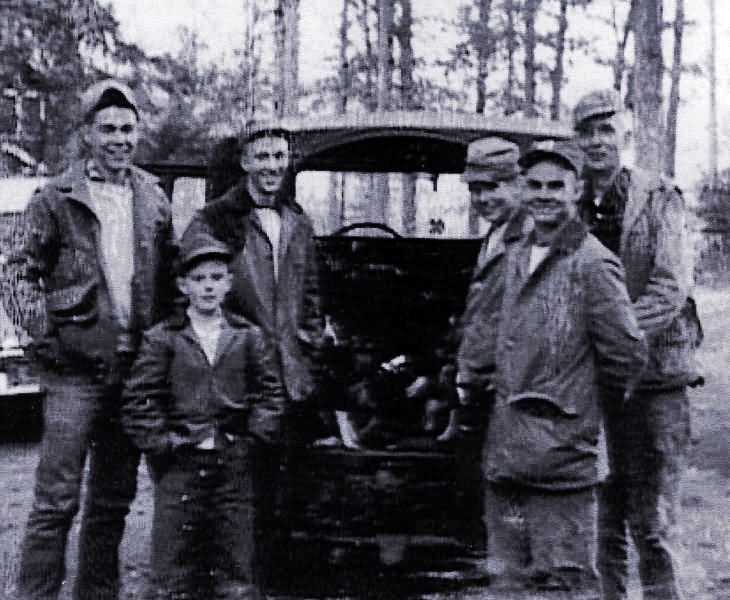
Other February activities included squirrel and rabbit hunting (Grandpa wasn’t involved in the latter because it required too much walking, but every weekend would find me, my father, one or two of his buddies, and an assortment of boys spending all Saturday after cottontails). Occasionally it would get cold enough to skate on ponds, and we did a lot of sledding. When it snowed we rode home-made sleds with wooden runners, but when it was dry and sunny you could also make a lightning fast trip down a broomsedge-covered hillside on a big piece of cardboard. There was no steering mechanism, much less brakes, but a briar patch, honeysuckle thicket, or flat spot would bring things to a halt soon enough.
Another of my various ways of dealing with February involved reading. By my mid-teens I had exhausted everything the local library had in the way of books on the outdoors, not to mention all of their holdings of Zane Grey, Theodore Roosevelt, and others. Robert Ruark’s wonderful tales in The Old Man and the Boy and The Old Man’s Boy Grows Older were read and re-read, as was his Horn of the Hunter. From that time in the latter half of the 1950s onward, I harbored a secret desire to become an outdoor writer.
Eventually, decades later, I reached that point. I’ve now been writing about hunting, fishing, nature, cooking wild game and fish, camping, hiking, and related subjects for better than four decades. I’ve been a lot of wonderful places and met a lot of grand people. All of it is grounded in a boyhood which was, I now know, an ongoing exercise in pure joy. Today, when possessed by the mollygrubs, all I have to do to lift my spirits is look back with nostalgic longing to those halcyon days of yesteryear.
Or I can turn my energies and memories to telling some tales of my own. Huge advantages in education notwithstanding, I’ll never match Grandpa Joe’s mastery. He may have been barely literate (he had six grades of book learning), but when it came to verbal communication he was truly masterful. That’s something we sometimes forget in a world dominated by the written word, and don’t for a minute tell me we’ve got some great orators among our politicians. An orator doesn’t have to read every word from a teleprompter, and Grandpa never had to read any word. He spoke them with a flair which entranced his youthful understudy. I’ve reached a sufficient level of competence as a communicator to keep me busy, and I’ve done considerable public speaking as an adjunct to my writing. The fact remains though that I’m a teller of tales, whether it is in writing or through the spoken word.
Now, as I invariably do in these newsletters, let’s close with an update on my activities along with some thoughts on food.
JIM’S DOIN’S
Other than what is noted at the outset, I don’t have a lot to report since the January newsletter. If you follow “Sporting Classics Daily,” a blog under the magazine’s overall communications umbrella, you’ll find frequent recipes from me offered there. Recent work of mine appearing on line or in print includes “January Jubilation: Fond Memories of the Year’s First Month” in “Blind Pig & the Acorn” blog, Jan. 11, 2022; “Triumph and Tragedy: Building Fontana Dam” in Smoky Mountain Living on line, Jan. 12, 2022; “A Day at Devil’s Dip” in “On the Fly South” blog, Jan. 20, 2022; and “Traditional Mountain Drinks,” Smoky Mountain Living, Feb./Mar., 2022, pp. 14-17.
RECIPES
To my way of thinking, there’s no finer antidote to the kind of down in the dumps attitude such weather can produce than some hearty, delicious food. For me, that means soup, stew, or chili, and whatever the choice there’s every likelihood that venison will be a featured ingredient. Give me a steaming bowl of pasta e fagoli soup with a slab of nicely browned cornbread on the side, and happiness becomes my middle name. The same thing is true for a bowl of chili, nicely topped off with grated sharp cheddar cheese or maybe sour cream. When it comes to stew, make mine chunks of venison swimming in rich gravy amidst carrots, peas, taters, and onions. When interspersed with bites of cornbread slathered with butter or perhaps a brace of cathead biscuits, life is good. Round it out with what mountain folks simply called “fruit” when I was a boy (they referred to cooked apples), and you’ve got some mighty fine fixings.
VENISON (OR BEEF) CHILI
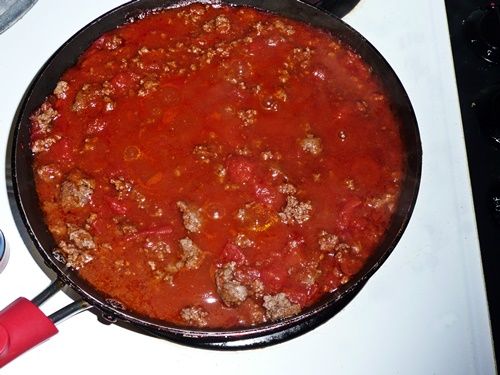
Brown a pound of ground venison and a large sweet onion in a skillet with just enough olive oil to keep the ingredients from sticking. Then place in a stew pot which already contains a pint of V-8 juice, a regular size (15-ounce) can of tomato paste, and two cans of diced tomatoes (better still, quarter and freeze tomatoes from your garden in quart zip-lok bags and use a bag of these in place of store-bought tomatoes). Add chili powder, along with salt and black pepper, to taste. If you want a bit of extra heat, crumble up two or three dried cayenne pepper pods or add red pepper flakes. Stir ingredients together thoroughly and then simmer, with a lid in place on the pot, until everything has mixed and married. Ten minutes prior to removing the pot to serve, add kidney beans, pinto beans, or garbanzo beans. I prefer not to salt at all but to leave it to each individual to add salt to taste. Have shredded Cheddar cheese and sour cream available as a topping Enjoy with cornbread, soda crackers, fresh baked bread, or garlic toast. Alternatively, shred lettuce, dice tomatoes, and chop an avocado into small pieces before topping with corn chips. Then pour chili on top, add cheese or sour cream, and have a chili salad.
TACO SOUP
1 pound ground venison
1 garlic clove, minced
1 medium onion, chopped
1 package dry taco mix
1 (15-ounce) can stewed tomatoes
1 (15-ounce) can red kidney beans, drained
1 (16-ounce) can corn, drained
1 (19½ –ounce) can beef broth (or make your own)
3 cups water
Tortilla chips
Grated cheese
Sour cream
Brown venison, garlic and onion. Add taco mix to venison and follow package instructions. In soup kettle, combine tomatoes, kidney beans, corn, broth and water. Add venison mixture and let simmer for a half hour. To serve divide crumble tortilla chips amount 6-8 soup bowls and add soup. Top with grated cheese and a dollop of sour cream.
PASTA E FAGOLI VENISON SOUP
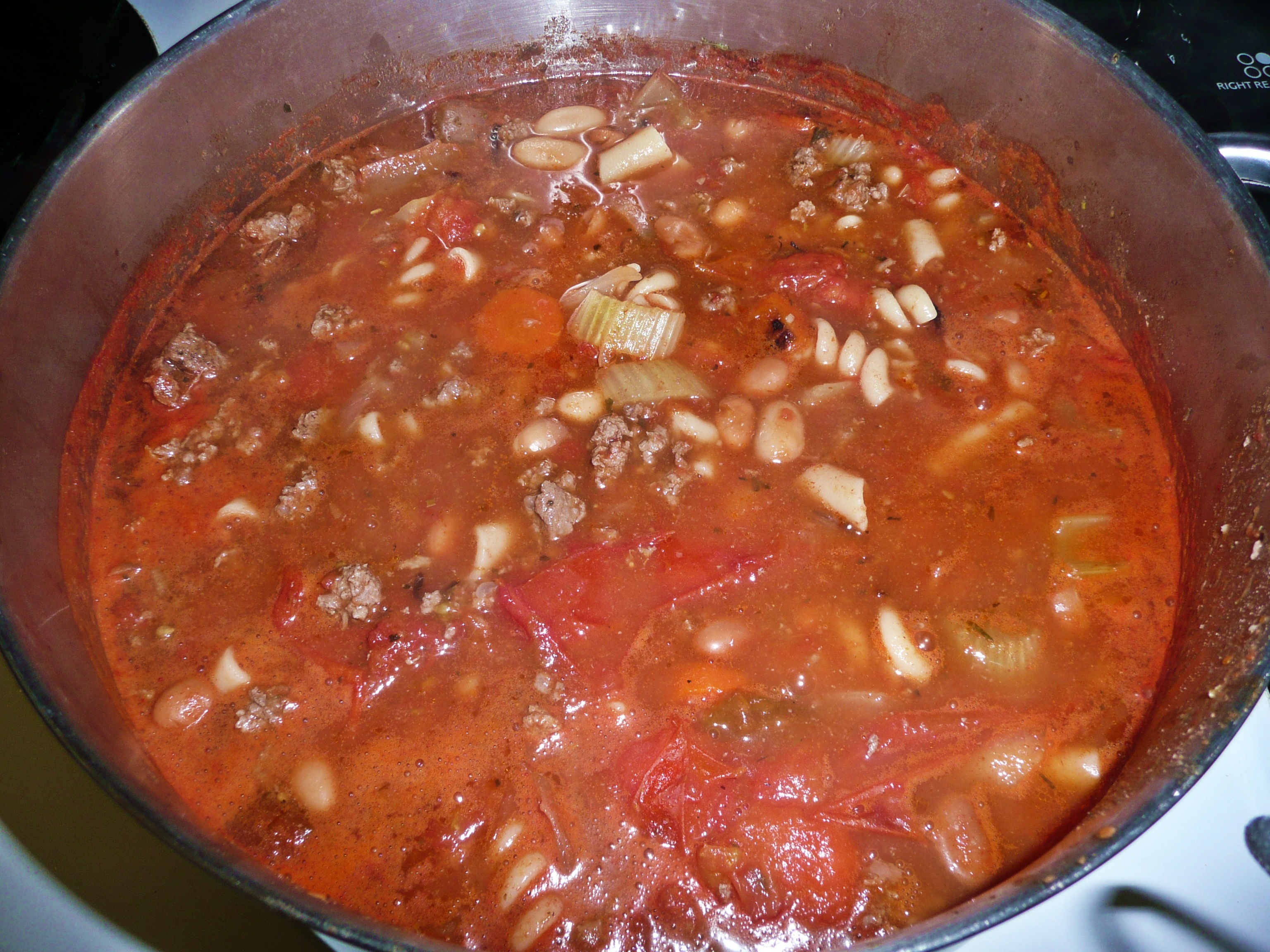
½ cup chopped onion
2 minced garlic cloves
½ cup chopped celery
½ cup grated carrots
2 tablespoons olive oil
1 (14-ounce) can chicken broth
½ pound ground venison, browned
2 (14-ounce) cans diced tomatoes
1 (8-ounce) can tomato sauce
1 (16-ounce) can red kidney beans
1 (19-ounce) can white kidney beans (cannellini)
1 cup cooked ziti (or other pasta)
½ teaspoon black pepper
1 teaspoon parsley
½ teaspoon basil
1 ½ teaspoons Italian seasoning
Salt to taste
OYSTER STEW
2 (12-ounce) cans of oysters or, better still, fresh ones
2 sweet onions, chopped
½ cup olive oil
1 teaspoon self-rising flour
4 cups milk (use whole milk if you want a richer broth)
1 tablespoon dried parsley
1 teaspoon seasoned garlic salt
½ teaspoon black pepper
Oyster crackers or saltines
Drain the oysters and check for pieces of shell. Sauté the onions in the olive oil in a Dutch oven over medium-high heat. Add the flour, whisking until blended. Add the oysters and stir to combine. Stir in the milk, parsley, garlic salt and pepper. Bring to a boil and remove from the heat. Serve immediately with crackers.
NOTE: To my way of thinking, there are precious few things which satisfy the inner man on a chilly winter’s day than a big bowl of oyster stew.
“FRUIT”
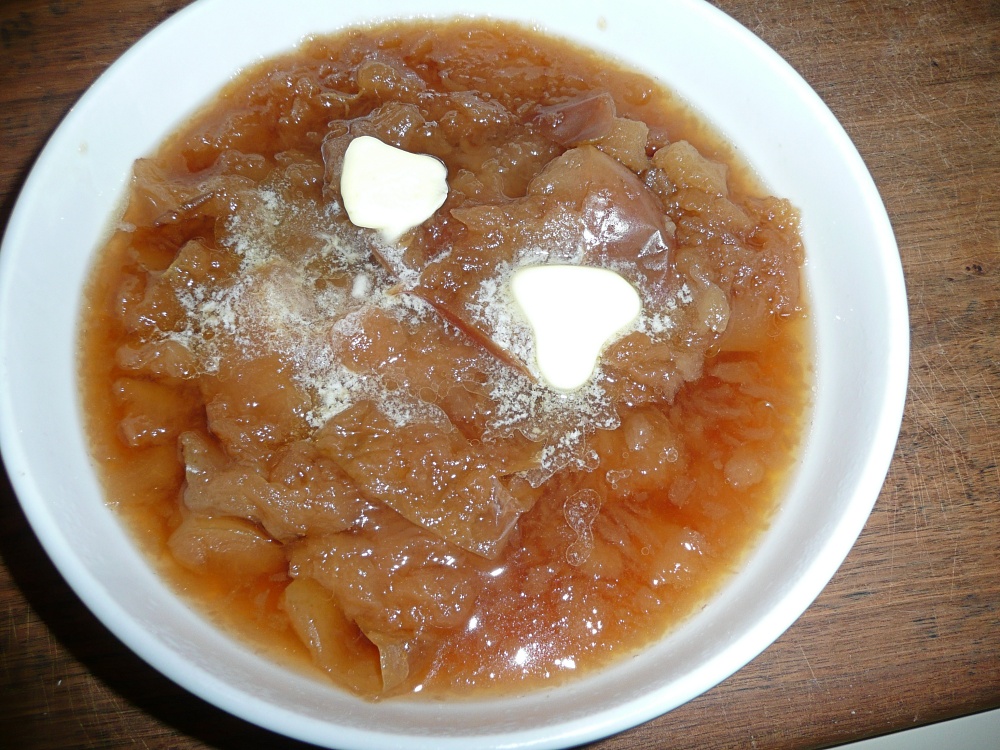
We had a small orchard on our place when I was a lad, and meticulous attention to pruning, spraying, and general care of those apple trees yield incredible bounty from Red Delicious, Golden Delicious, and Stayman varieties. Momma had a standard goal of canning 200 quarts of them every year. To this day I’m astounded that our family of five consumed that many apples, and I loved it when a winter meal was rounded off with some warmed up fruit swimming with butter than had just melted. Even better though were stewed apples freshly prepared. Momma left the peelings on those and to me the chewiness that brought added to the appeal. There are few things simpler to fix, and stewed fruit, either by itself or atop something like gingerbread of pumpkin bread, is a treat for any sweet tooth.
Slice several apples into eighths, coring the pieces, and place them in a large cooking pan or small pot with just enough water to barely cover them. Bring them to a boil and then reduce heat to a simmer while putting a lid in place. Once the fruit begins to soften, add brown sugar to taste and allow to continue cooking until soft. Serve hot with butter or cold without it.